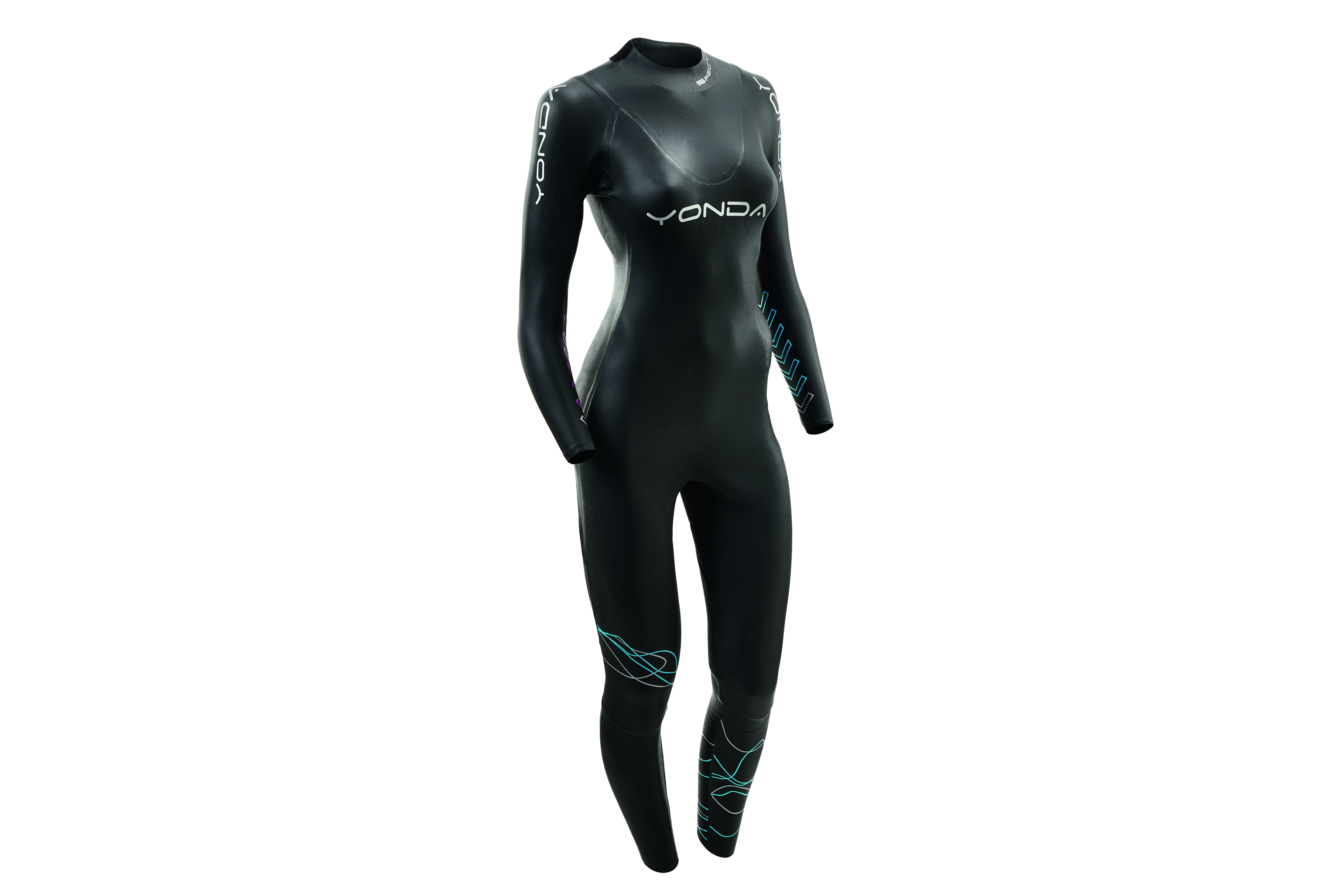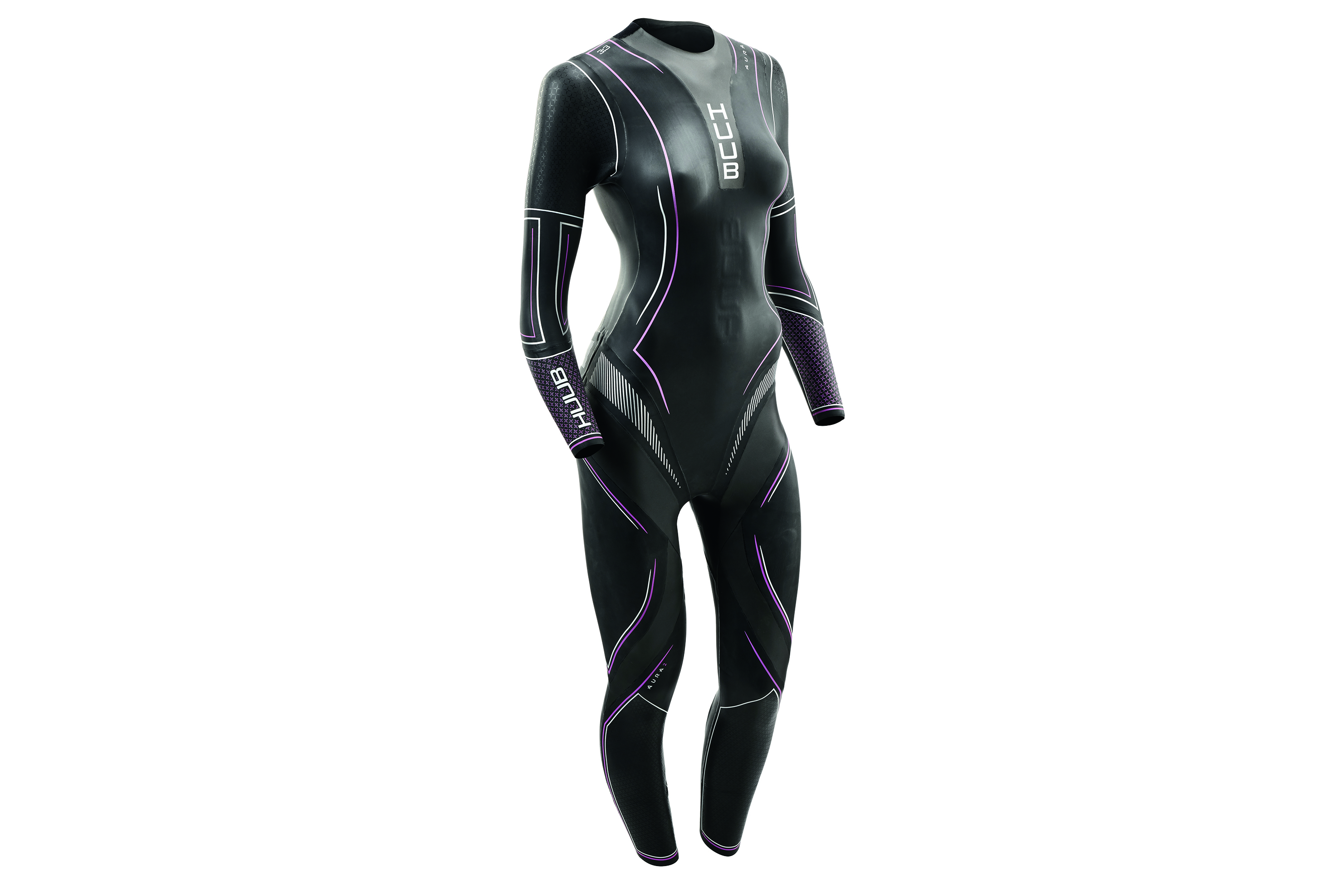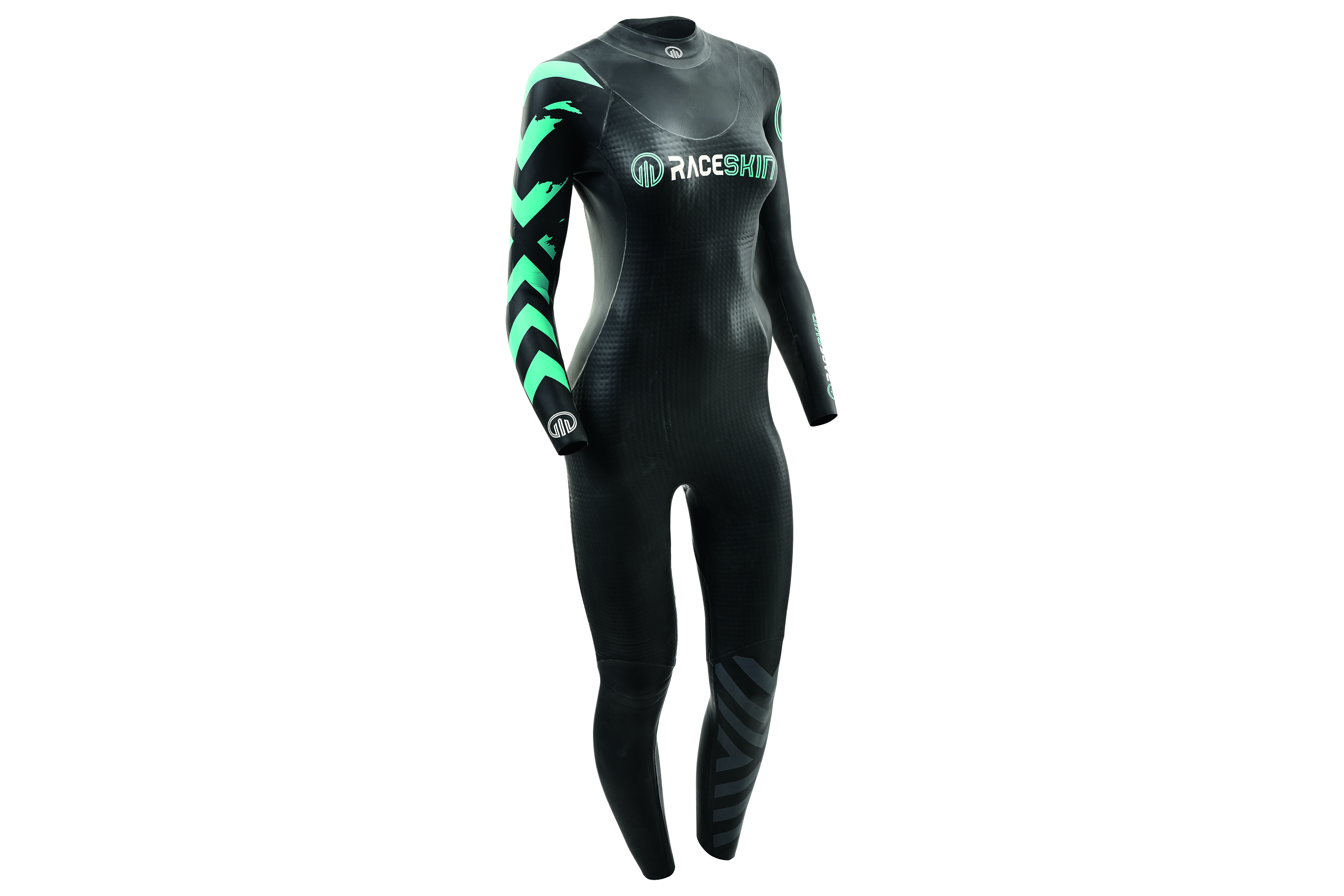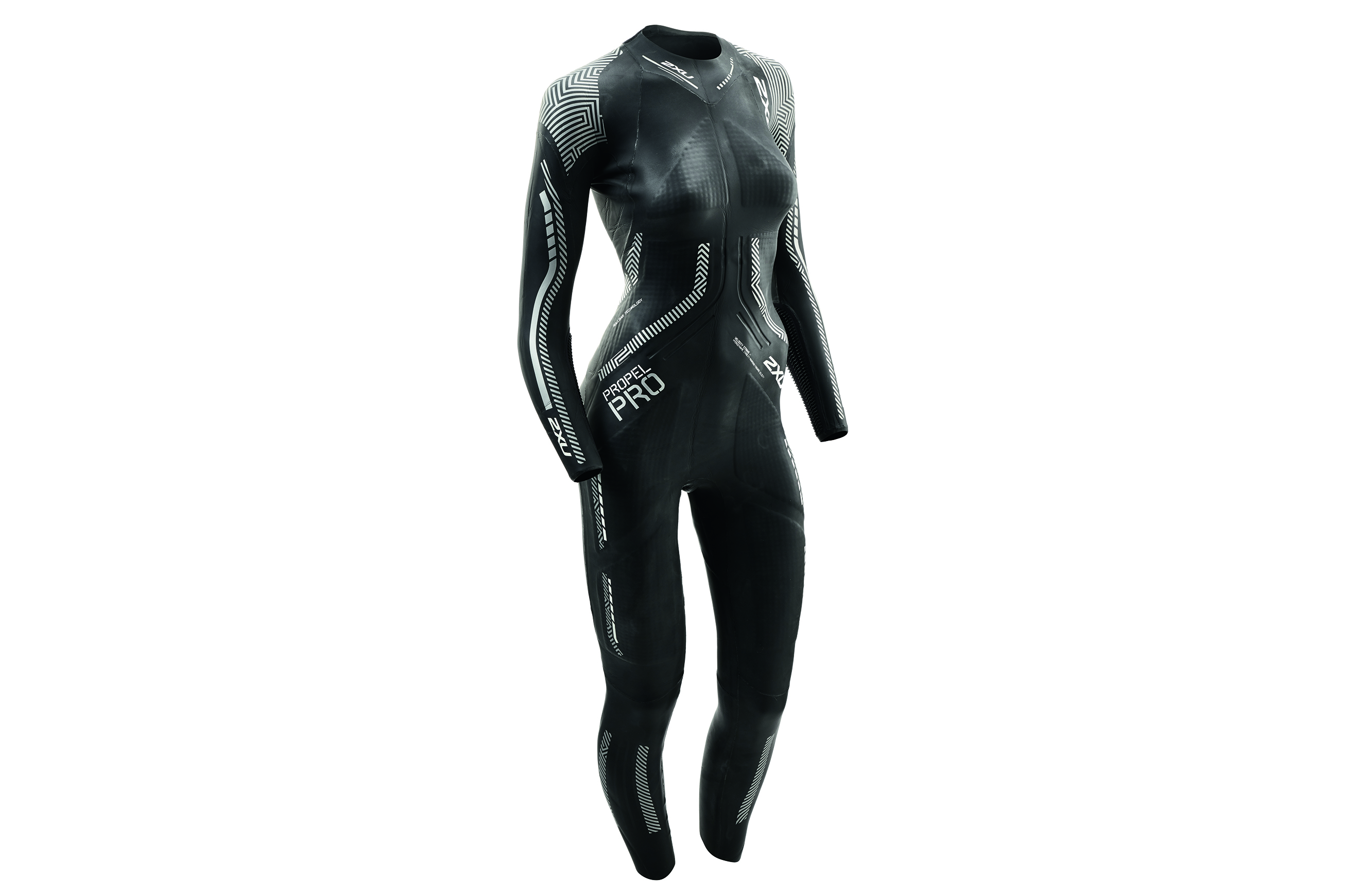Best women’s triathlon wetsuits for all budgets
Need a new triathlon wetsuit for next season, so you can smash the swim leg? Here are the best women's triathlon wetsuits out on the market, all independently reviewed by our experts

The triathlon wetsuit is one of the most important buys you’ll make when it comes to triathlon gear. While they’re some super high-tech options out there, the aim of a women’s triathlon wetsuit remains the same: to get you swiftly and smoothly through the water.
Women’s triathlon wetsuits these days have all sorts of tech built-in and come in varying different thicknesses. To make your life easier, here we’ve collated some of our very favourite women’s triathlon wetsuits for a range of budgets, from affordable sub-£250 triathlon wetsuits, to mid-range £250-£500 options, and top of the range £500+ performance wetsuits.
In this article, you’ll find the best triathlon wetsuits specifically for women on the market today. We’ve recommended a range of performance-focused race suits, some great training wetsuits for beginners, and thermal tri wetsuits for colder climes, all independently reviewed by our experts.
Best women’s triathlon wetsuits at a glance
Best value women’s triathlon wetsuit: Orca Athlex Float | Buy now from Orca
Best mid-range women’s triathlon wetsuit: Huub Aura 2 3:3 | Buy now from Huub
Best top-end women’s triathlon wetsuit: Orca Apex Flex | Buy now from Orca
Best thermal women’s triathlon wetsuit: Huub Alta Thermal | Buy now from Huub
Best triathlon wetsuits for women in 2025
The best sub-£250 triathlon wetsuits for women
Best value women's triathlon wetsuit
Orca Athlex Float

220 Triathlon verdict
Excellent quality for the small price tag, with a nice hit of extra buoyancy. Score : 92%
Pros
- Great value for money
- Flexible and buoyant materials
Cons
- Hard to think of any
- £239 / $349
Orca’s 2024 triathlon range remains unchanged, which is great for those who rely on its quality and affordability.
The Athlex Float, an entry-level buoyant wetsuit, impressed me with its balance of lift and flexibility.
It features 4.5mm neoprene in the legs and core for buoyancy while maintaining excellent freedom of movement, thanks to the highly elastic Infinity Skin 2 lining.
I typically avoid buoyant suits, but this one felt natural in the water without compromising body position.
With its combination of comfort, flexibility, and affordability, the Athlex Float is a superb choice for those seeking a budget-friendly racing suit.
Raceskin RS01

220 Triathlon verdict
Basic in design, but with good value for money and plenty of buoyancy. Score : 78%
Pros
- Good lift for weaker swimmers
- Flexible arms
Cons
- Zip is a faff!
- Not for breastroke
- £250 (UK only)
Trying a Raceskin wetsuit for the first time, I was initially concerned about the 5mm buoyancy panels and the seemingly small fit.
However, once on, it performed well in the water. While slightly too buoyant for me, the thick leg and core panels will help weaker swimmers with body position.
The 1.5mm arms offer decent flexibility, though it’s not ideal for breaststroke. Unusually for an entry-level suit, the zip fastens from the bottom like a jacket—slightly tricky but provides extra room to maneuver.
Overall, it’s a solid choice for those needing added buoyancy.
Van Rysel Women’s SD Neoprene

220 Triathlon verdict
Great budget pick for shorter distances, and it’s highly flexible in the water. Score: 79%
Pros
- Easy to whip on and off
- Very flexible
Cons
- Not much buoyancy
- £119.99
The Van Rysel Short Distance (SD) wetsuit is Decathlon’s entry-level option for newcomers tackling short-course triathlons (up to 750m).
It primarily uses jersey neoprene with front and back Glideskin panels for durability, though this reduces buoyancy, making it less suited for heavy-legged swimmers or cold water.
While we expected more lift for a beginner-focused suit, its standout feature is flexibility—allowing unrestricted movement in the arms, back, and low-cut neckline.
Its adaptable design supports both breaststroke and front crawl, while the beveled ankle cut ensures quick transitions. Overall, it’s a solid choice for flexibility and ease of movement.
Blue Seventy Sprint

220 Triathlon verdict
Some nice features, but dated in some ways. Score : 72%
Pros
- No water ingress
- Good range of movement
Cons
- Underarm panels feel basic
- £230
The Blueseventy Sprint sits at the higher end of our top budget triathlon wetuits, priced around £200.
It fits snugly, though after an hour in the water, we noticed some lower back tension—so careful sizing is key.
The blue jersey panels under the arms feel basic compared to full neoprene suits but, combined with 1.5mm outer arm neoprene, offer great flexibility.
Stretchy calf panels aid quick removal, while the 3-4-4mm buoyancy encourages good body position. A bottom-up zipper and high rolled neck prevent water ingress effectively.
The best sub-£250-£500 triathlon wetsuits for women
Yonda Spectre

220 Triathlon verdict
Great features and great value for swimmers looking for improved buoyancy. Score: 90%
Pros
- Good arm range of movement
- Helpful buoyancy profile
Cons
- Durability could be a question
- £279
When it comes to value for money, the Yonda Spectre has a lot to offer. Thinner neoprene arm and shoulder panels provide good mobility and extend down the side of the body to below waist level.
We found this design really helped with fit around the hips and with ease of movement overall, which was something we hadn’t seen with similar wetsuits on test.
Thicker neoprene on the torso and legs added extra buoyancy to the legs and hips, the extent to which it felt like swimming with a pull buoy.
The smooth lining of the Spectre made removal in T1 easy. Overall, the fit felt good, with a comfortable neckline and the zip easy to use, but we were curious about how well the thin cuff line at the wrist would stand up to use over time.
Dhb Aeron Lab 3.0

220 Triathlon
Good value, lightweight suit for strong swimmers; seam at bikini level is opinion-dividing. Score: 85%
Pros
- Lightweight
- Easy to remove
Cons
- Not for those needing max buoyancy
- £350
Dhb suggests that you’ll ‘unleash the fastest version of yourself’ with the Aeron Lab 3.0, so understandably we were excited.
It certainly feels lightweight with super soft neoprene, and it was easy to get on and off, feeling great to wear, but there’s a seam lying across the top of the arm that could lead to chafing over time.
Range of motion was excellent thanks to the 2mm thick neoprene on the shoulder panels and arms.
With the lower half of the wetsuit being made of 4mm neoprene, the Aeron doesn’t provide the greatest buoyancy, but it’s great for swimmers who are already happy with their position in the water.
Unlike other wetsuits on test, the Aeron has a seam at bikini line level, which we felt detracted from its otherwise good looks.
Best mid-range women's triathlon wetsuit
Huub Aura 2 3:3

220 Triathlon verdict
A great-fitting, comfortable suit for strong swimmers. Score: 90%
Pros
- Light and agile
- Good shoulder mobility
Cons
- Not loads of leg lift
- £255
Huub says the Aura 2 3:3 wetsuit is designed specifically for the female athlete in terms of fit and buoyancy.
On test, it fitted like a glove and felt light compared to many of the other suits. The Aura has excellent shoulder mobility; the number of panels used in this area and also around the hips and legs supported the overall feeling of comfort and mobility.
With the Aura, you feel like it’s adapting to your shape rather than the other way around.
While the neoprene on the upper legs is relatively thicker than elsewhere and will therefore aid buoyancy, this wetsuit provides much less leg lift than other wetsuits on test.
The Aura is very easy to get on and off, with handy panels at the ankles making removal even simpler.
Raceskin Summa

220 Triathlon verdict
Good suit for swimmers looking for increased leg flotation; but tight neckline let it down. Score: 80%
Pros
- Good buoyancy
- Full arm mobility
Cons
- Leg section almost too buoyant
- £460
The Raceskin Summa is a good-looking wetsuit, and for people who like extra buoyancy, it has a lot to offer.
By adding Aerodome panels (air bubbles built in between the fabric layers) to the upper legs and chest, along with thinner neoprene, the Summa achieves good arm mobility and very buoyant hips and legs.
However, for one tester, it felt almost too buoyant to give an effective body position in the water.
It was good to see that the thicker ‘dimple’ neoprene stopped at the knee, allowing for greater freedom of movement.
As the Summa uses a reverse zip, you do need help zipping it up though.
Overall, the fit was good, but we found that the thicker albeit soft material around the neck felt tight over time in the water.
Zone3 Aspire

220 Triathlon verdict
Positive environmental message; good buoyancy and speed; let down by comfort and fit. Score: 79%
Pros
- Good buoyancy
- Speedy
Cons
- Flexibility and fit lacking
- £499
With neoprene derived from limestone rather than oil, the Aspire claims to be the environmentally-friendly option.
The Aerodome materials provide a reported 30% extra buoyancy than standard neoprene, and the added leg and hip panels meant no kicking was required to stay afloat in our sea-swim tests.
While it boasts superior flexibility, movement didn’t feel as free around the shoulders as others on test and the forearms felt unnecessarily tight.
The arms and legs came up a bit short and, when at the catch phase of the stroke, there was a pulling feeling at the front of the body – those above average height may struggle here.
Despite this, the Pro Speed cuffs made for a quick transition and, despite feeling restricted, thanks to the drag-reducing SCS coating it gives the feeling of gliding along with minimal effort.
Best women's thermal triathlon wetsuit
Huub Alta Thermal Wetsuit

220 Triathlon verdict
The Huub Alta Thermal wetsuit is warm and offers a good body position. Plus, a good price point for a second suit purchase. Score : 85%
Pros
- Comfortable and flexible
- Excellent warmth
- £299
The Huub Alta Thermal is an entry-level open-water wetsuit with a 2:4 buoyancy profile, designed to support newcomers by promoting a good horizontal position.
The suit proved comfortable, stretchy, and easy to swim in. It was also simpler to get on and off than the similarly priced Zone3 in our best thermal wetsuits test.
The thermal lining provided excellent warmth, while the ‘arms neutral’ design ensured good shoulder flexibility.
A slimmer swimmer testing the fit found it warmer than her usual suit, with no water ingress. Overall, it’s a solid choice for those seeking warmth, flexibility, and ease of use.
Best top-end £500+ triathlon wetsuits for women reviewed
Key things to look for in a mid to top-end wetsuit are the correct buoyancy for your swim style, so consider whether you need more buoyancy in the legs, but also whether you want more structure and lift in the chest and torso, or whether your body position and core strength are such that you don’t need it. The thickness of the arms becomes a consideration here too, plus maximum flexibility in every area of your stroke should be a given.
Zone 3 Vanquish X

220 Triathlon verdict
Full of technical, tri-specific features. A top-end suit. Score : 88%
Pros
- Very buoyant
- Speedy and supportive
Cons
- May be too buoyant for some
- £699
The Vanquish X is a top-tier tri wetsuit, maintaining its price despite market hikes. Packed with cutting-edge tech, it features 11 materials, from ultra-thin 0.3mm arm panels to 5mm buoyant core sections.
This creates a highly flexible yet supportive suit, though some swimmers may find it overly buoyant.
The Silk X lining aids quick removal, but sizing options are limited. Despite an alpha titanium lining for warmth, we still felt it’s best suited for milder waters.
Ideal for triathletes seeking speed and support, it’s a high-performance investment.
Read our full review of the Zone3 Vanquish-X Wetsuit here.
Best top-end women's triathlon wetsuit
Orca Apex Flex

220 Triathlon verdict
Supple and a joy to swim in, a great suit for racing and one of the best money can buy! Score : 94%
Pros
- Hugely flexible and supple
- Feels like a second skin
Cons
- Not one for winter
- Potential durability Qs in the long-term
- £589 / $719
The Apex Flex replaces the beloved Alpha in Orca’s lineup, and we were initially nervous about the change. However, Orca has taken an already phenomenal suit and made it even better.
Soft, supple, and incredibly flexible, it’s designed for strong swimmers with good body position (see the men’s Apex Flow for added buoyancy).
Featuring Yamamoto 44+ neoprene for exceptional stretch and 0.88mm arm panels for a tissue-thin yet warm feel, it’s perfect for summer racing.
While not suited for winter and requiring careful handling, its unrestricted movement makes it the new gold standard for race-day performance.
2XU Propel Pro

220 Triathlon verdict
Top honours for a very flexible, yet not overly buoyant suit, that provides top performance. Score : 90%
Pros
- Impressive flexibility
- Good body position from buoyancy
Cons
- Hard to think of any!
- £600 / $640
Like the Zone3, the Pro also appeared in our 2019 women’s test, winning ‘best on test’. At the time, we noted our size medium was seeing some water flushing through it, but subsequently testing a smaller size solved the problem – although the zip closure at the top does allow some water to creep in.
That aside, this is a fantastic suit and we were impressed with its flexibility and how easy it was to pull on. The seamless 1mm arm and chest panels give good range of movement in the water with minimal fatigue.
Unlike many of the other suits on test, the legs are a mix of 2mm and 3mm panels (also 3mm buoyancy inserts in the torso) and we really liked the body position it created.
Often 5mm legs can provide an overly high lift, which can create pinching in the lower back on long swims. Shaped cuffs made it easy to remove and, overall, this felt like a top-quality suit.
Deboer Women’s Ocean 1.0

220 Triathlon verdict
The Deboer Ocean 1.0 is a fast, warm suit, but it’s hard to get into and we can’t ignore that sky-high price. Score : 80%
Pros
- Great thermal properties
- Fast to swim in
Cons
- Stiff and tight cuffs
- £817 / $999.95
The Ocean 1.0 is a rigid wetsuit with tight cuffs, making it tricky to put on, but once in, it provides excellent warmth with its ‘ThermaFur’ lining.
It felt fast, shaving a minute off my usual 1km time, though I noticed a cold trickle down my neck.
Designed for waters as cold as 8°C—or 6°C with optional gloves, booties, and a hoodie—I managed swims at 5°C without extra gear.
However, the high price makes it a serious investment, best suited for dedicated cold-water swimmers looking for performance and warmth in extreme conditions.
How we tested the best women’s triathlon wetsuits
These triathlon wetsuits for women were tested in UK waters by 220 Triathlon’s team of female, expert gear reviewers. Both in lakes and seas, we assessed how well each suit delt with UK summer and autumn temperatures, dealing with waves and currents, to understand their race-day form.
Each was tested for comfort, how easy they were to put on and take off, water ingress, and flexibility while swimming. As our testing period spanned over several weeks, we could also attest to the short-term durability of several uses.
Together, our testers have years of expert wetsuit testing experience, being of different swim speeds and builds. It’s important to choose a wetsuit that’s the right fit, comfort, and good value, take a look at other key features to consider below.
What to look for when buying a woman’s triathlon wetsuit

Fit and sizing
The fit of your triathlon wetsuit is paramount. An ill-fitting, poorly-chosen suit will leave you sinking in the water with huge water ingress and a sore neck from chafing. Be sure to try before you buy, where possible, and pick the right size for a snug fit that still allows for complete freedom while swimming.
Buoyancy profile
The level of buoyancy in your suit will depend greatly on your swimming level and body composition. Those with heavier legs will need a suit with at least 2-3mm of neoprene thickness in order to raise them up in the water, avoiding unnecessary drag in the water.
Typically, the most buoyancy will be built into the heavy body trunk, while arms that are in constant movement don’t need much lifting in the water. Consider whether you’ll be swimming in lake or sea water, as salt can aid in buoyancy.
Flexibility and range of movement
This is really key in a wetsuit. Your arms should be able to perform a complete front crawl stroke uninhibited by the wetsuit. Consider whether the suit feels too stiff, or thick around the arms, or if there is any pinching. A high-stretch neoprene (1-2mm) should be present in the shoulders and arms for efficient swimming.
Material and construction
Premium suits use high-quality neoprene like Yamamoto for durability, warmth, and stretch. Features like linings or special coatings can improve comfort and hydrodynamics.
Warmth
For colder races, consider thermal linings or thicker neoprene (just don’t go over the 5mm maximum thickness for racing). If racing in warm water, opt for thinner, highly flexible suits to prevent overheating.
Quick to take off
Quick transitions are crucial in triathlons. Look for features like breakaway zippers, stretchy ankle panels, and easy-to-remove linings for fast T1 changes.
On the lookout for more open water swimming gear and advice? Take a look at our other reviews and expert tips.



